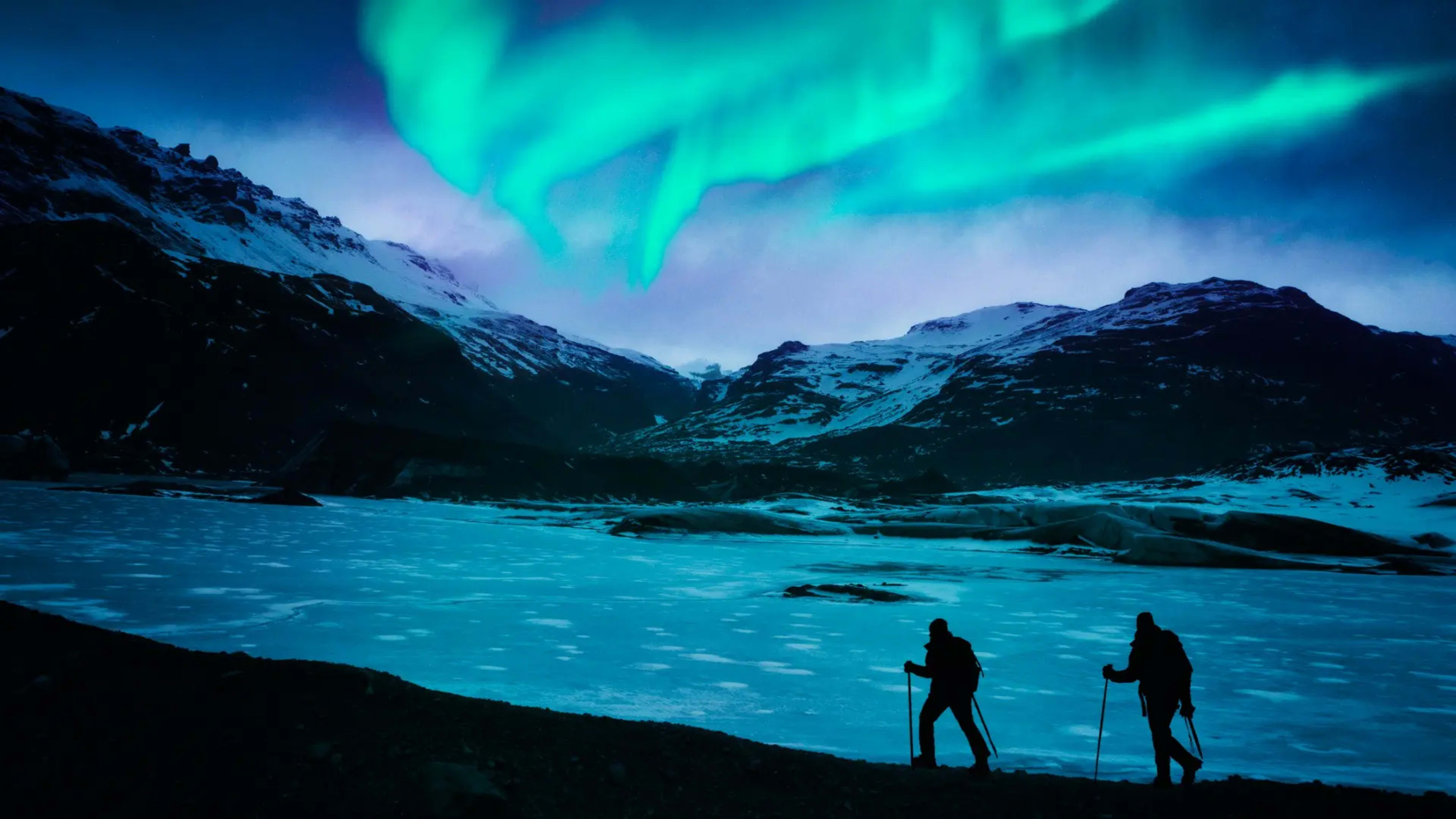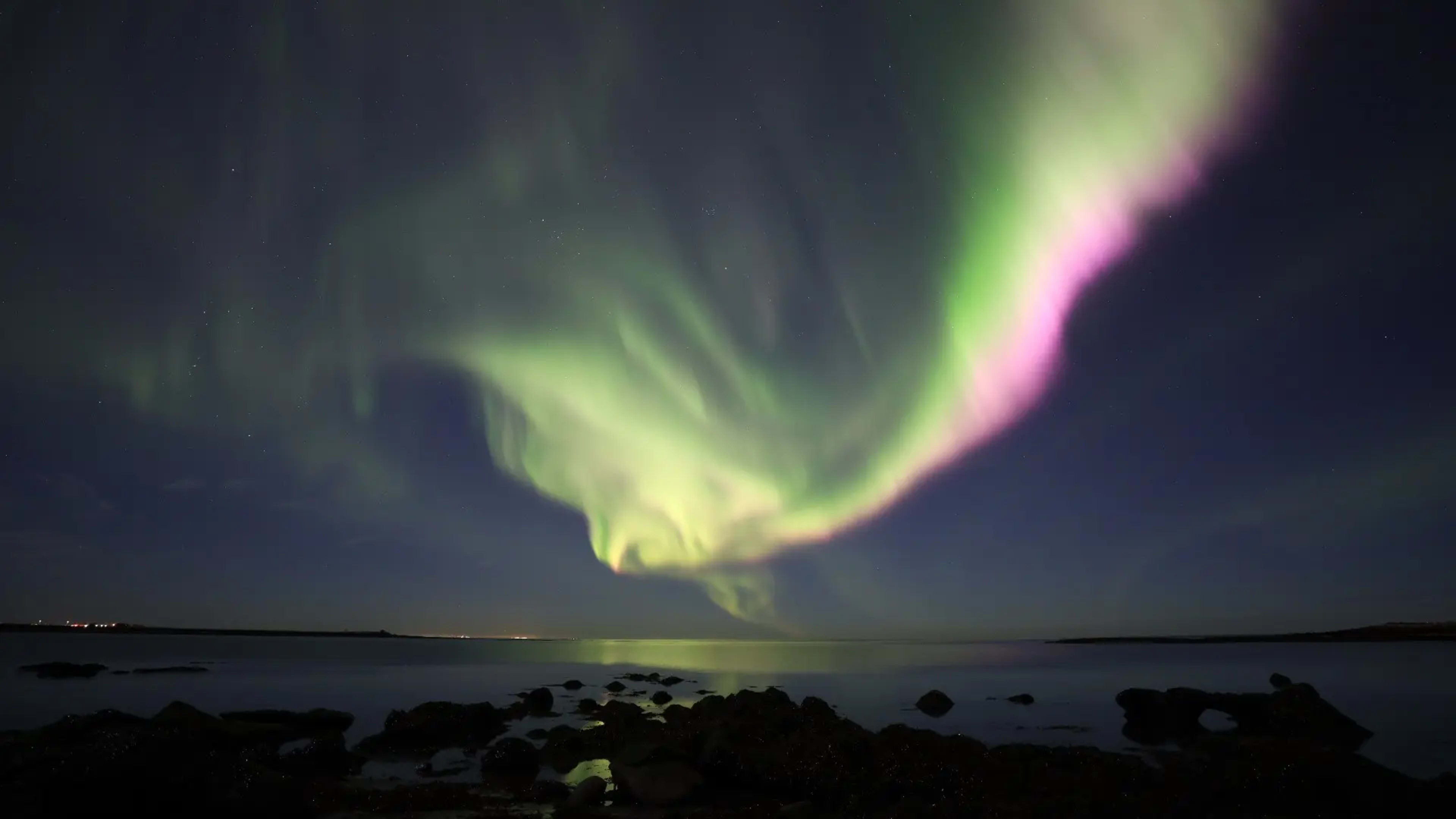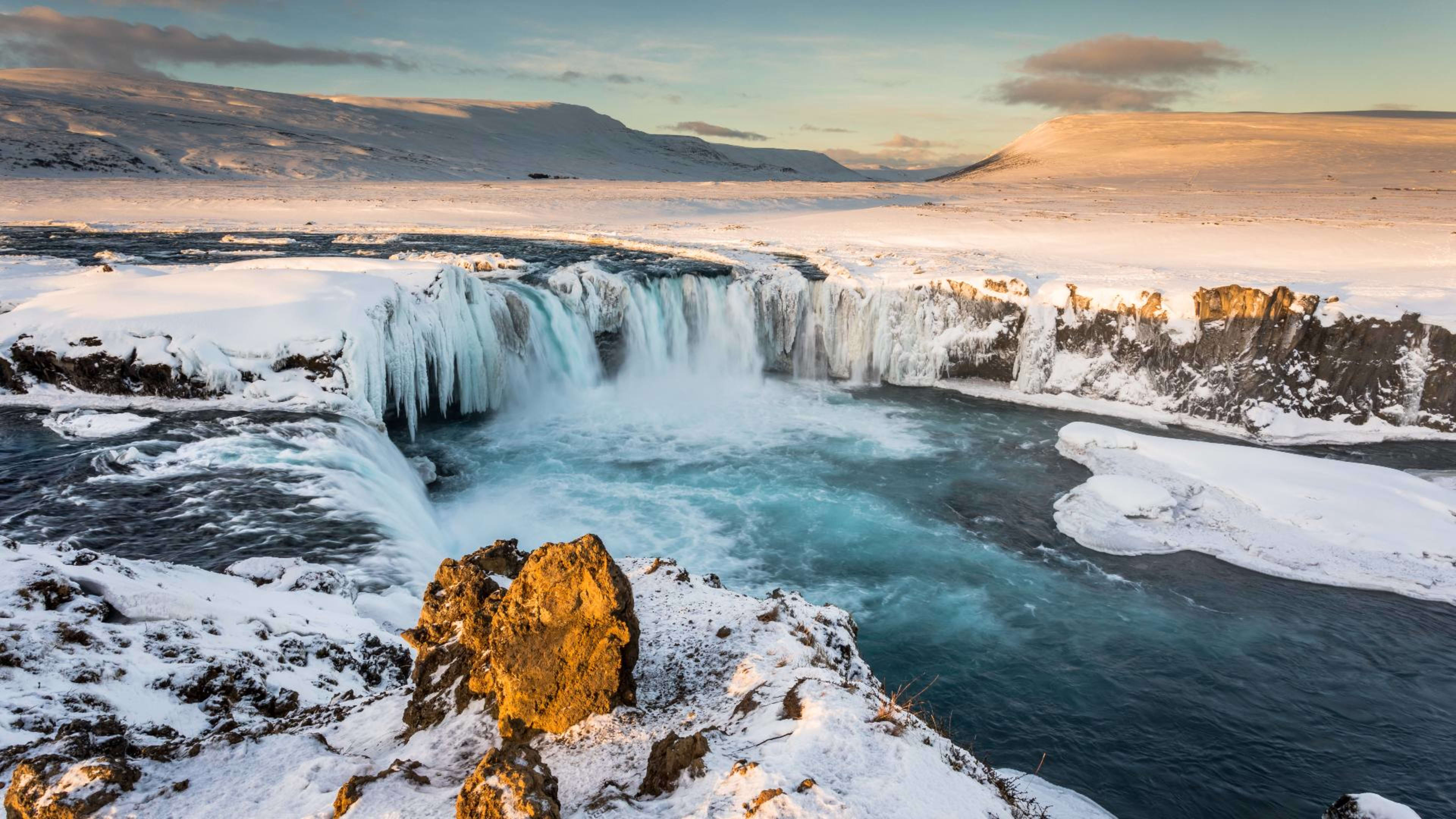Seeing the Northern Lights is something you likely have on your bucket list. It’s a truly breathtaking experience that you never get tired of seeing. But when is the best time to see the Northern Lights in Iceland?
Visit Iceland on a Northern Lights tour for a chance to see the beautiful display and experience the Land of Fire and Ice yourself. There are plenty of unique winter activities you can do to make your trip to Iceland even more memorable.

When can you see the Northern Lights in Iceland?
The best time to visit Iceland for Northern Lights is in the winter. The period from October until March is generally regarded as the ideal time to seek out the Aurora.
This is because Iceland has very long dark nights in the winter months – a contrast to the midnight sun of the summer. Daylight is limited at this time of year, and the extensive periods of darkness are optimal to spot the Northern Lights.
It’s sometimes thought that your chances to see the Northern Lights are better when it’s colder. This is only partly true. When it’s colder, skies tend to be clear, so it’s easier to see any dancing colors in the sky. The temperature itself has little impact on whether the lights appear.
The Northern Lights do actually occur all year round, but they are hard to detect against a light summer sky. Visiting Iceland in the winter makes seeing them much easier.
Where is a good place to see the Northern Lights in Iceland?
People want to see the aurora in Iceland for many reasons. You might have a lifelong dream of watching them, or maybe you’re keen to photograph the phenomenon. Perhaps a trip to Iceland is just a great idea!

Luckily, Iceland is a beautiful country to visit, and there are many excellent spots to see the Northern Lights.
1. Seltjarnarnes
If you’re on a city break in Reykjavík, Seltjarnarnes is a great place to start your Northern Lights hunt. This small town is located within the capital but juts out into the North Atlantic Ocean.
Set away from the light pollution of the city, you can find a dedicated viewing point for seeing the Northern Lights. Seltjarnarnes is only a 10-minute drive from the center of Reykjavík, so if you see that there’s a good aurora forecast, you can hop over and try your luck.
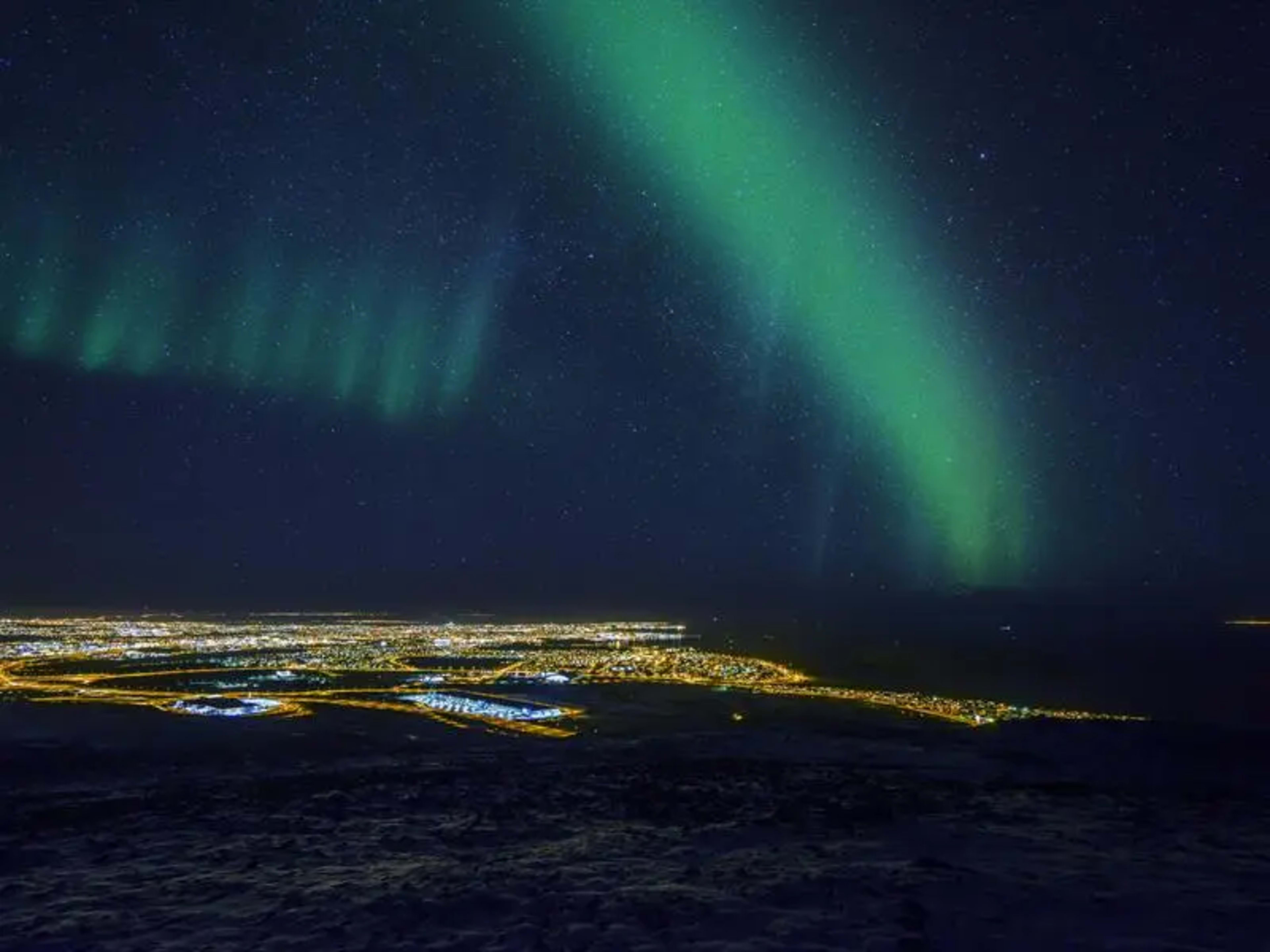
2. Vík
If you’re heading to the south coast of Iceland, the beaches of Vík are an excellent viewing opportunity. You can travel out from Vík to Reynisfjara, which boasts impressive basalt cliffs and the Reynisdrangar rocks as a backdrop.
With wide open views of the sea and sky, you can pick a spot anywhere to see the lights.
3. Skaftafell
Staying further along the south coast as part of a private guided trip or self-drive tour of Iceland? Skaftafell is an ideal location to visit. Situated close to Europe’s largest glacier, Vatnajökull, there are plenty of good spots in the heart of the wilderness area.
You can easily spend an evening watching out for the aurora, cozied up together.
4. Snæfellsnes peninsula
The Snæfellsnes peninsula offers stunning backdrops if you’re keen to photograph the aurora. Here you will find the world-famous Kirkjufell mountain, plus many of Iceland’s best waterfalls. This area is quite sparsely populated, so light pollution shouldn’t interfere with your view of the light show.
- Related: Your guide to the Snæfellsnes peninsula.
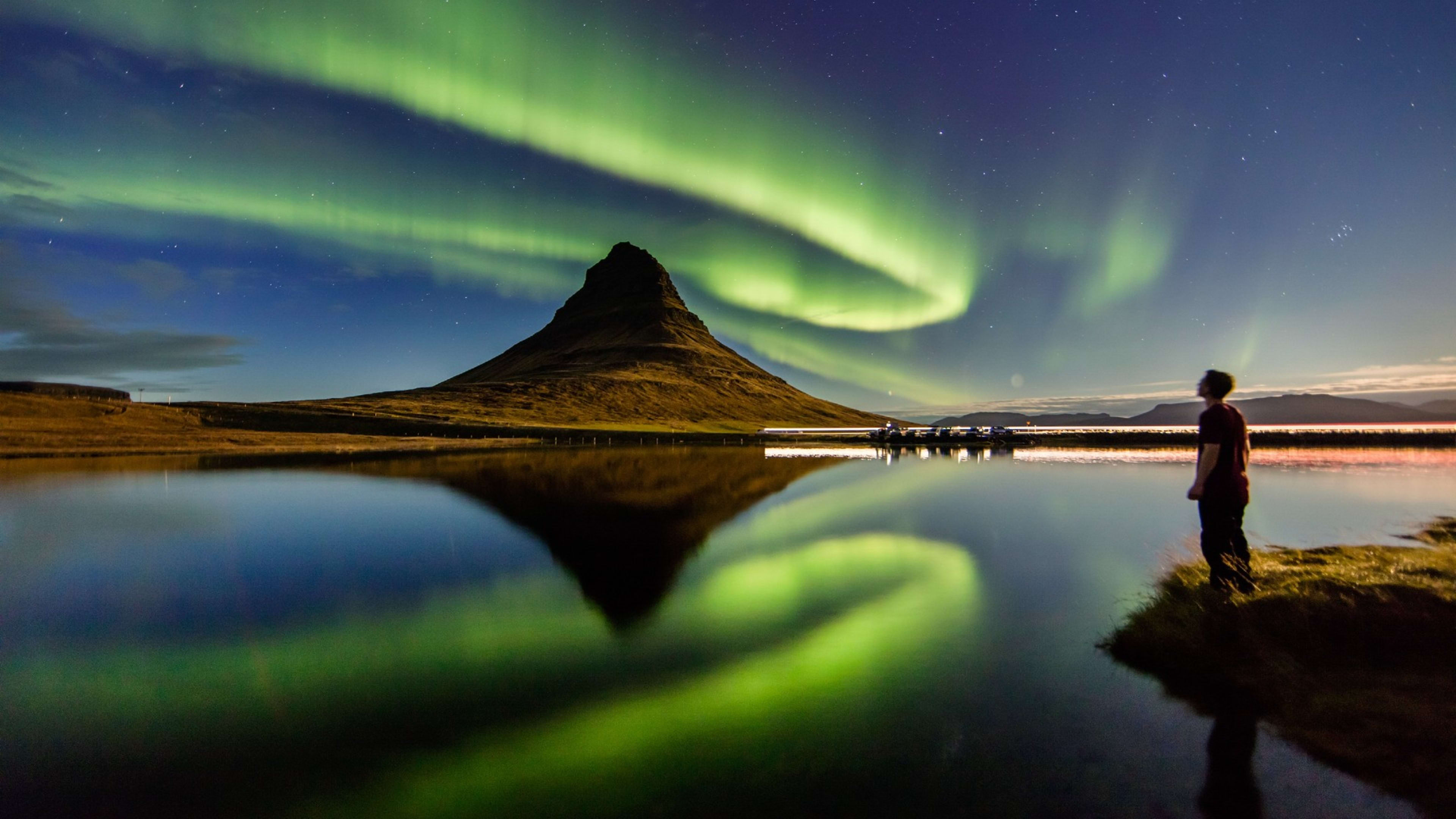
Almost any place in Iceland is a good choice to see the Northern Lights. You could even make a road trip out of seeing them against the famous landmarks of Iceland.
What conditions do I need to see the Northern Lights?
Seeing the Northern Lights does involve a bit of luck, but there are also weather and solar activity conditions that help increase your chances. If you want to try and maximize your likelihood of seeing them, here are some top tips:
1. Check the Aurora forecast
Keep an eye on the Icelandic meteorological office regularly. Weather can be changeable in Iceland, especially in the winter and in coastal areas. You should choose an evening that is calm with no chance of storms for the best chance to see the Northern Lights.
You can also download an Aurora forecast app. Many of these apps track solar activity (which causes the aurora) in the atmosphere. This can help you know when the lights are appearing and at what time.
2. Look out for darkness
You need clear, dark skies to see the lights at their best. A night with no cloud and plenty of hours of darkness will give you the best viewing opportunities.
3. Get away from light pollution
Iceland tends to have very low levels of light pollution, thanks to its sparse population. That said, traveling away from major cities and towns will improve your viewing experience.
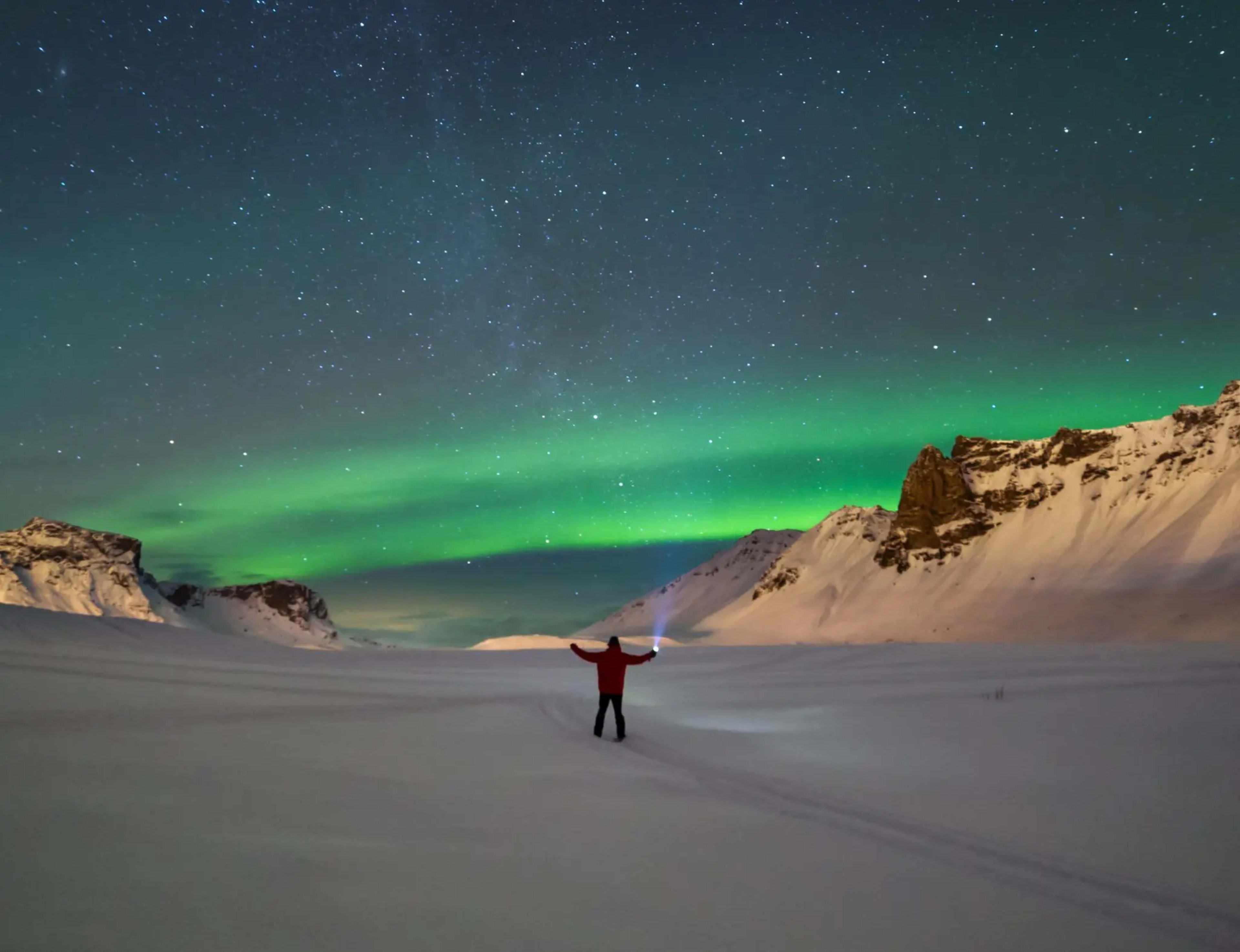
4. Visit in winter
Wondering when are the Northern Lights in Iceland? Visit between October and March. These months offer longer nights in Iceland, ideal for going on a Northern Lights hunt. Although it's also possible to spot the aurora if you visit Iceland in spring or fall.
- Related: Must sees and dos for Iceland in winter.
5. Be patient
Even when the aurora forecast is good and weather conditions are perfect, you might need to wait a little bit. The lights are a natural phenomenon after all and can’t always be predicted.
Follow the advice around the Northern Lights season to give yourself a head start on witnessing this natural wonder.
- Enjoy getting into the great outdoors on one of these Iceland adventure tours.
What else can I do in winter in Iceland?
Traveling to Iceland and getting around the country is more than possible in winter. Make sure to rent a 4-wheel drive vehicle if you’re planning to do a self-drive tour. Always go with a guided tour if you’re unsure of managing the winter road conditions.
Be prepared with appropriate cold and wet weather clothing!
Northern Lights tours are a must-do for a winter trip to Iceland. But there is plenty more you can experience in the colder months to make your visit unforgettable. Whether you’re after adventure or want to unwind, Iceland has options for everyone.
1. Visit ice caves
A great recommendation for a winter activity is to explore the ice cave formations around Langjökull glacier. Located north of Þingvellir National Park, you can wander into man-made tunnels that go deep into the glacier, forming ice caves.
Explore the bright blue otherworld of the glacier and step back to the Ice Age with an ice cave tour.
- Discover ice cave tours of Iceland and book today.
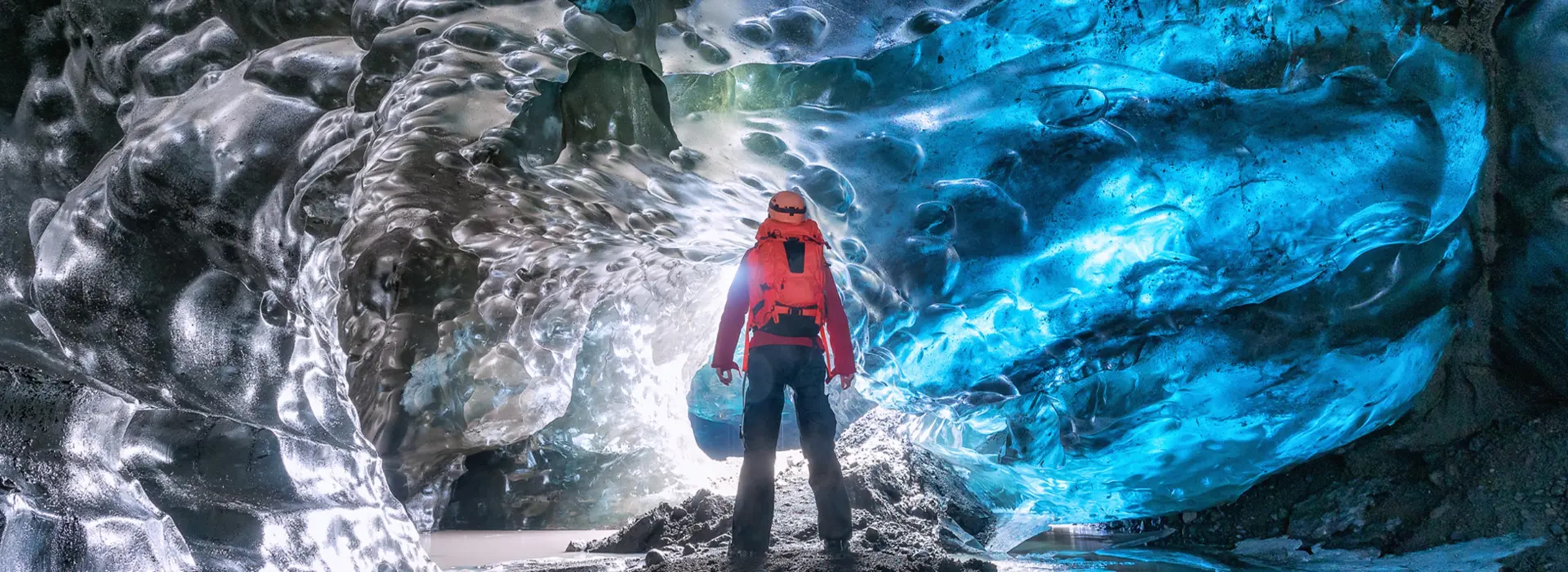
2. Take on glacier walking
If you’re on the south coast, you can hike the Vatnajökull glacier in winter. As Europe’s largest glacier, Vatnajökull has many smaller glaciers coming off it, creating trails and routes.
In nearby Skaftafell you'll find an outlet glacier, ideal for hiking. Choose a pre-booked excursion to get the best experience. Even if you’re a confident hiker, you should still go with a guide and make sure you have all the appropriate safety equipment.
3. Drive a snowmobile on a glacier
To see the winter landscape of Iceland without the hard work of climbing, hop on a snowmobile tour to see the sights. Travel around the Golden Circle and Gullfoss waterfall, or whizz across the Vatnajökull or Mýrdalsjökull glacier.

4. Look out for the winter wildlife
For nature enthusiasts, the Icelandic wildlife in winter offers a great chance to see some of the Arctic Circle residents. For bird watchers, look out for ptarmigans in their white winter plumage – you might see them hopping across volcanic landscapes in the national parks.
On the south coast, you can spy eider ducks in the sea and on the shoreline. If you’re in a more rural spot, you might even catch a glimpse of the rare Arctic fox.
5. Go whale watching
When you go whale watching in winter, you might see minke whales, beluga whales, and harbor porpoises off the coast of Iceland. If you’re around the Snæfellsnes peninsula, there might even be the opportunity to see orca pods.
6. Spend Christmas in Iceland
Visiting Iceland in December? Time your trip with Christmastime. Icelanders have many unique Christmas traditions including the merry Yule Lads and the witch Grýla with her ghostly Yule Cat.
Join in the winter celebrations with some jólabjór (Icelandic Christmas beer) and smoked lamb. You could also visit the Hallgrímskirkja in Reykjavík to attend a Christmas service.
- Visit Iceland with a Christmas vacation package.

7. Celebrate New Year the Icelandic way
New Year in Iceland is also a wonderful event to be part of. Bonfires are built up to celebrate the turning of the year, and Icelanders are not ones to shy away from a party! Expect to see some fireworks at midnight, or maybe even the Northern Lights if you’re really lucky.
- Check out New Year’s package in Iceland
- Visit Iceland in January or come later in February.
8. Bathe in geothermal hot springs
You can always unwind in one of Iceland’s many geothermal pools. The hot springs are a real delight in the cold weather. Sit back and relax in the volcanic-warmed water while the air temperature drops.
The Blue Lagoon is open all year round, or there are many local hot springs you can visit if you’re staying further from the capital.
What makes Iceland a great place to see the Northern Lights?
You simply can’t beat the Land of Fire and Ice as one of the best places to see the Northern Lights. With its long dark nights and low light pollution, spotting the aurora is much easier than in more populated countries.
Not only that, but the range of stunning scenery means that you’re guaranteed an extra level of wow factor if you want to photograph the Northern Lights.

It’s worth remembering that the Northern Lights are a natural phenomenon and cannot be guaranteed. That said, when you visit Iceland, you experience more than just the Aurora. You’ll also get to see volcanic landscapes, learn about Viking history, and admire snowy mountains while you hunt for the lights.
Winter is by far the best season to see Northern Lights in Iceland. There are all kinds of exciting winter activities on offer, so it’s a great time to visit Iceland in general!
Book your Northern Lights adventure to Iceland now to make this dream a reality. For just a 5% deposit you can secure the vacation of a lifetime with Iceland Tours. Explore the Northern Lights packages and tours to get started.

